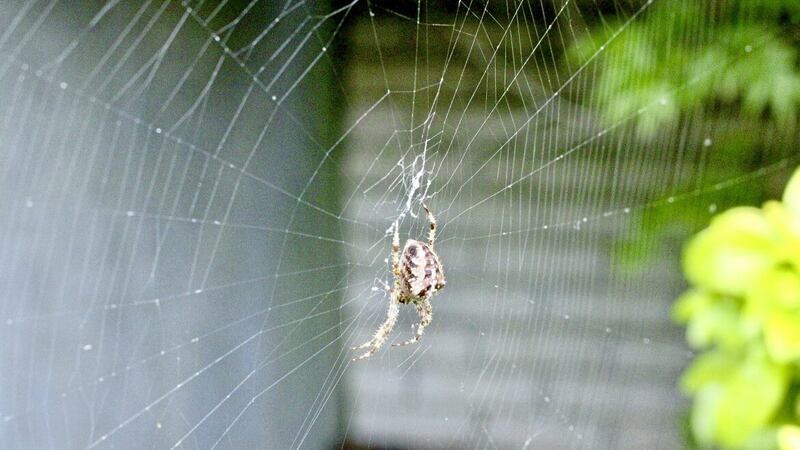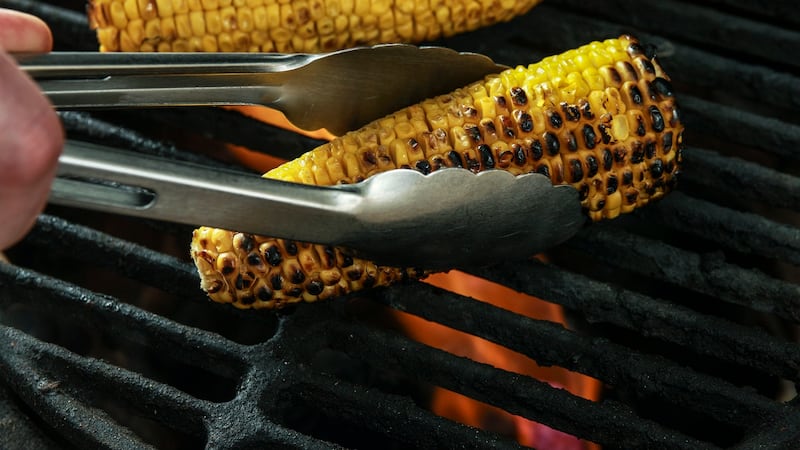At the end of Charlotte's Web, E.B. White's classic story of friendship, life and death, Wilbur the little runt of a pig watches the baby spiders of his friend Charlotte take to the air, "ballooning" off from a fence, calling out, "Goodbye, goodbye," as they leave, saying: "We are aeronauts, and we are going out into the world to make webs for ourselves."
An anxious Wilbur, not wanting them to leave, asks: "But where?" The spiderlings reply: "Wherever the wind takes us."
On a sunny day in the garden, back in late October, I observed this graceful ballooning event, when seven strands of silk, with their precious cargo drifted gently on a soft breeze above and beyond the thorn hedge, in effortless procession.
Ballooning is used by spiders and other small invertebrates to travel through the air and disperse to other locations. The spider climbs to a high point on a tall piece of grass or a fence and pointing its abdomen skyward, releases one or more fine silk threads from its spinneret, allowing a breeze to carry it off in the air.
Read more:
Take on Nature: On the Wild Atlantic Way
Take on Nature: A warm welcome awaits the magnificent birds of prey
Once airborne, the spider has little control on how far or high it will travel, sometimes reaching heights of several miles and distances of a few metres to a hundred miles away.
Charles Darwin during his expedition on the Beagle in 1832, was surprised and baffled, especially as the day was calm, to witness the arrival of hundreds of spiders land on the famous ship, 60 miles off the Argentinian coast.
Theories about ballooning, also known as 'kiting', have existed from the 1800s and focused mainly on the force of wind lifting silken threads or rising warm thermal currents, much the same way birds soar at great heights on these updrafts.
Darwin wondered though if the spiders he encountered were using some form of electrostatic force to get lift off, but he couldn't prove this, so the wind argument remained the most accepted. In recent years, however, scientists from Bristol University have shown, "that electric fields (e-fields) can be detected by spiders and are sufficient to stimulate ballooning. We find that the presence of a vertical e-field elicits ballooning behaviour and take-off in spiders." (Electric Fields Elicit Ballooning in Spiders; 2018).
Morley and Robert created electric fields like those occurring naturally and observed that under these controlled conditions spiders mimic the behaviour they exhibit in the wild, letting out silk and waiting to take off from chosen perches.
Around the same time as the floating strands of silk, I also spotted a fierce looking garden spider watching over its spiral web at the side of my brown bin. One of our largest spider species, damhán alla gairdín, is easily identified by the distinctive white cross pattern on its abdomen. If prey gets entangled in the sticky threads, the spider will run out and tightly wrap its victim in silk before administering a poisonous bite.
Like the house spiders running across our floors at this time of year, enjoying the indoor warmth, the garden spider is harmless to us, hence the old rhyme, "If you wish to live and thrive, let a spider run live," reflecting a widespread view across many cultures that killing a spider brings bad luck.
Seeing those delicate strands quietly drift off to wherever the wind took them, it is easy to understand that sentiment.
Returning to Wilbur, the good news was that not all of Charlotte's young spiders left. Joy, Aranea and Nellie remained, ensuring the lovable pig would still feel Charlotte's caring presence around the busy barn on Zuckerman's farm.








